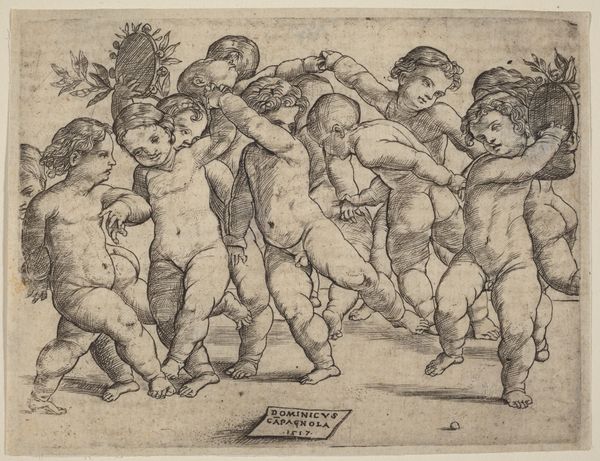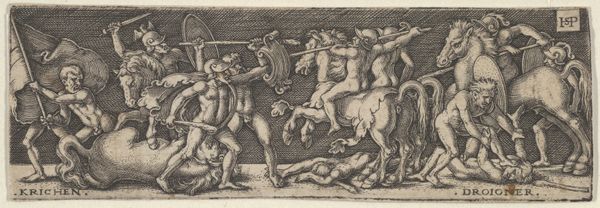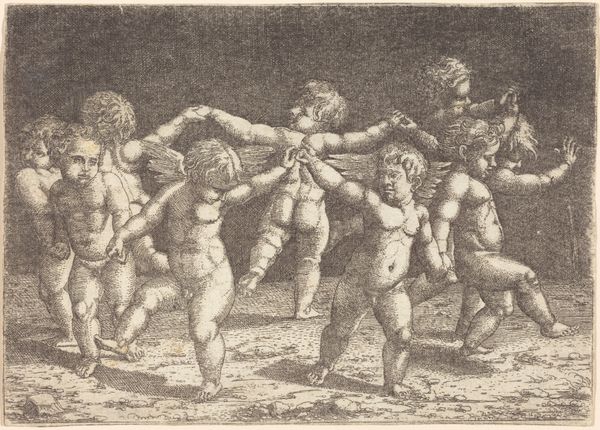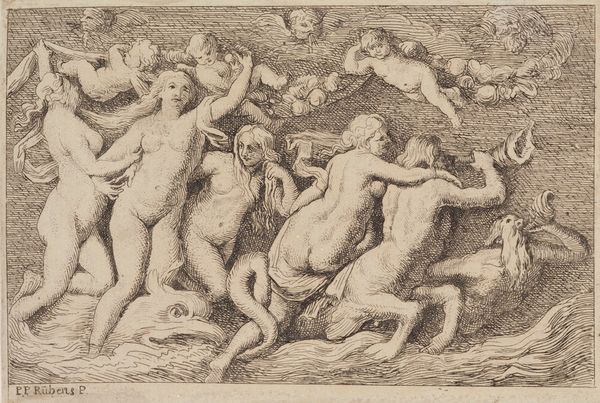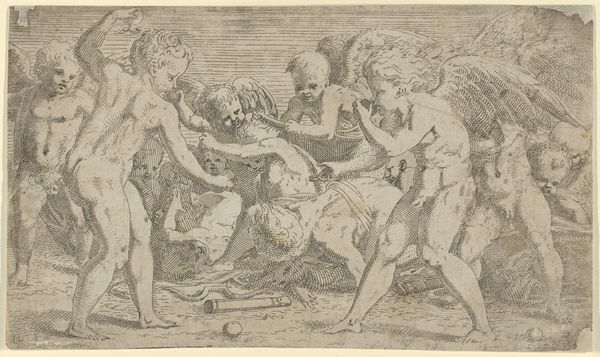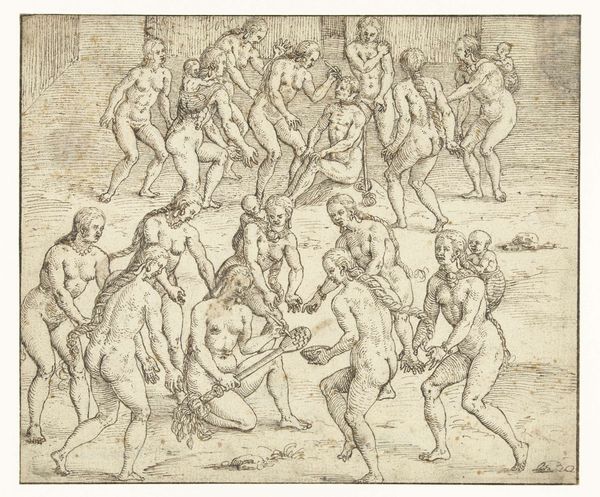
Nude Children Dancing Under a Canopy, with Two Horses on the Left and a Banner on the Right 1527 - 1537
0:00
0:00
drawing, print, intaglio, engraving
#
drawing
#
ink drawing
#
pen drawing
# print
#
pen sketch
#
intaglio
#
pencil sketch
#
figuration
#
11_renaissance
#
child
#
group-portraits
#
horse
#
men
#
line
#
northern-renaissance
#
nude
#
engraving
Dimensions: Sheet: 1 11/16 × 4 1/8 in. (4.3 × 10.4 cm)
Copyright: Public Domain
Curator: Welcome. Before us is “Nude Children Dancing Under a Canopy, with Two Horses on the Left and a Banner on the Right” by Heinrich Aldegrever, created between 1527 and 1537. Editor: It’s teeming! The eye hardly knows where to settle amidst the scrum of all these chubby figures. A burst of childlike energy rendered in stark ink. Curator: Precisely. Note how the children are presented nude, a reference to classical ideals of beauty and innocence that were experiencing a resurgence during the Renaissance. The canopy and banner suggest a formal event or celebration. Are we viewing a mythological scene, or an allegory perhaps? Editor: Allegory certainly feels right, though my eyes keep circling back to the material itself. Intaglio, etching… These lines are decisive, weren't they? They carve out volumes from almost nothing; it looks backbreaking to make! And so much labor invested depicting childhood, no less! What does it tell us? Curator: It speaks, in part, to a persistent interest in Humanist philosophy. Nudity in Renaissance art symbolized purity, truth, and a connection to the classical world. The dancing itself could represent joy, harmony, and the idealized state of humanity. Childhood depicted here represents new beginnings and potential. Editor: And how complicit we are, even now, in this pursuit of ideals! This isn’t just an aesthetic preference but the very economic underbelly that props it up, a careful dance around meaning as shaped by social pressures, by expectations, and even material constraints of producing beauty like this... The luxury of allegory! Curator: Yes. Aldegrever prompts questions about societal values—then and now. The image isn’t just about capturing beauty, but engaging in a dialogue about its foundations. The banner could signal authority, a moral code subtly imposed even in playful celebration. Editor: A reminder that art is rarely produced in a vacuum. Even idyllic scenes like this carry the weight of their socio-economic conditions. Thank you, then, Aldegrever, for layering the symbolic and the tactile so densely! Curator: A captivating visual. A testament to the Renaissance ideals of celebrating human form while hinting at underlying societal complexities. Editor: Indeed, food for thought—crafted meticulously by labor, yet whispering grander concepts to future gazers such as ourselves.
Comments
No comments
Be the first to comment and join the conversation on the ultimate creative platform.



